#Academy of Athens
Explore tagged Tumblr posts
Text

📍Academy of Athens, Greece
#dark academia#light academia#classical#academia aesthetic#escapism#academia#books and libraries#classic literature#books#architecture#place#travel#Academy of Athens#athens#greece#photography#royal core#cottage core#aesthetic#aesthetics#academic#statue#mood#vibe#tumbrl
552 notes
·
View notes
Text

Academy of Athens at night
#athens#greece#architecture#neoclassical#travel#europe#wanderlust#buildings#columns#culture#attica#original photography#academy of athens#ancient greek#greek gods#greek architecture#greek mythology#photographers on tumblr
367 notes
·
View notes
Photo
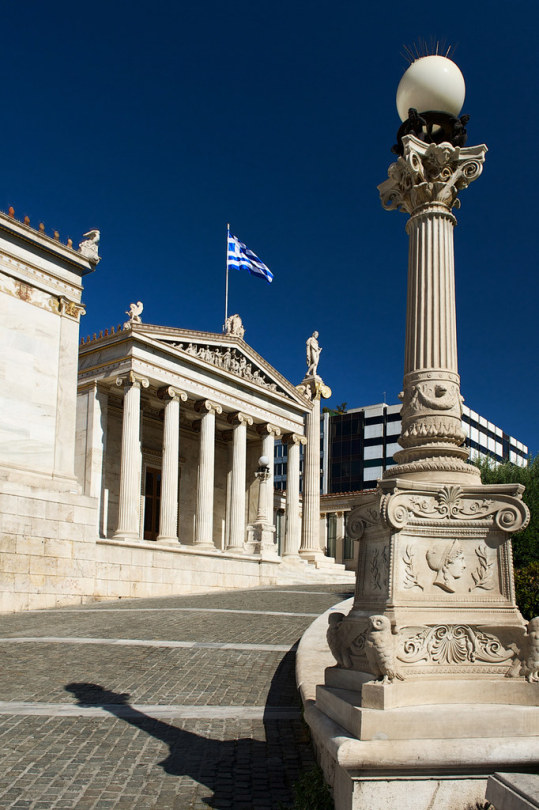
Academy of Athens by George Koultouridis.
#greece#europe#travel#wanderlust#architecture#neoclassicism#city#athens#academy of athens#central greece#attica#sterea hellas#mainland#greek culture
199 notes
·
View notes
Text

Academy of Athens, Greece
Greek vintage postcard
#sepia#academy#photography#vintage#postkaart#ansichtskarte#ephemera#carte postale#postcard#greek#postal#greece#briefkaart#academy of athens#photo#tarjeta#athens#historic#postkarte
2 notes
·
View notes
Text
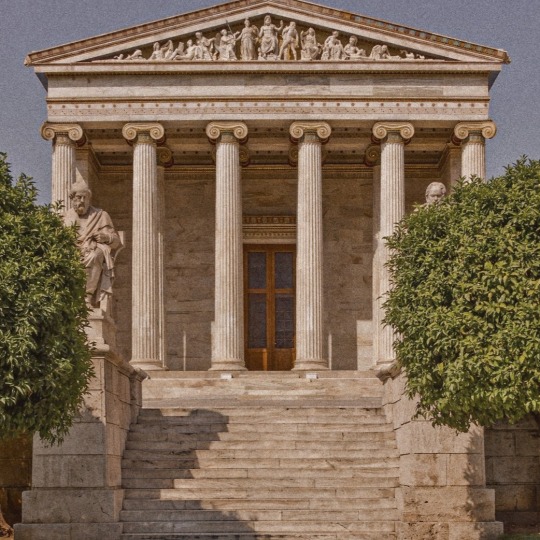

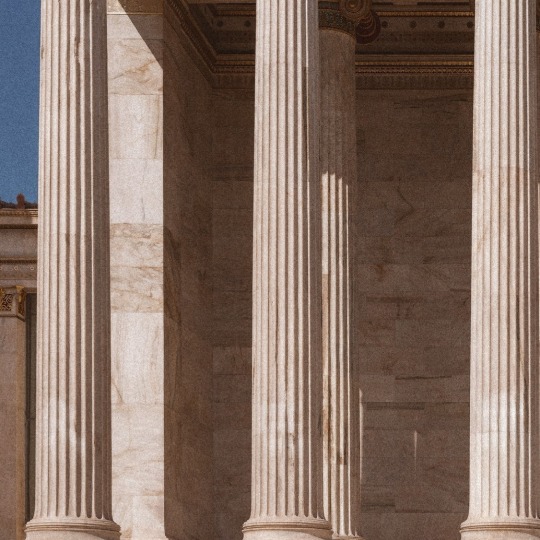

The Academy of Athens by classicist_org.
#the academy of athens#ancient greek#greek mythology#greek gods#greek art#greek aesthetic#greek architecture#greece#alternative#aesthetic#dark academia#dark academic aesthetic#dark aesthetic#aestheitcs#dark#art#light acadamia aesthetic#light academia
1K notes
·
View notes
Text




How long would you be gone? - Maybe four or five years, or… Maybe a little less, if I study real hard.
Xena: Warrior Princess - 1x13 "Athens City Academy of the Performing Bards"
#xena#xenaedit#xwp#xwpedit#xena 1x13#xena s01e13#Athens City Academy of the Performing Bards#guess who's doing a rewatchhhh#my gifsets
1K notes
·
View notes
Text

"Have you forgotten the lessons I taught you?"
In honor of the Ocean Saga dropping tomorrow, have a drawing of Athena!
176 notes
·
View notes
Text
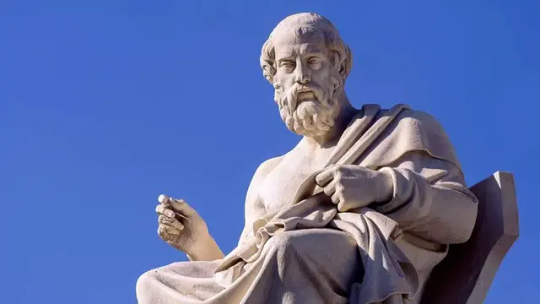
Herculaneum Scrolls Reveal Plato's Burial Place
Researchers used AI to decipher an ancient papyrus that includes details about where Greek philosopher is buried.
The decipherment of an ancient scroll has revealed where the Greek philosopher Plato is buried, Italian researchers suggest.
Graziano Ranocchia, a philosopher at the University of Pisa, and colleagues used artificial intelligence (AI) to decipher text preserved on charred pieces of papyrus recovered in Herculaneum, an ancient Roman town located near Pompeii, according to a translated statement from Italy's National Research Council.
Like Pompeii, Herculaneum was destroyed in A.D. 79 when Mount Vesuvius erupted, cloaking the region in ash and pyroclastic flows.
One of the scrolls carbonized by the eruption includes the writings of Philodemus of Gadara (lived circa 110 to 30 B.C.), an Epicurean philosopher who studied in Athens and later lived in Italy. This text, known as the "History of the Academy," details the academy that Plato founded in the fourth century B.C. and gives details about Plato's life, including his burial place.


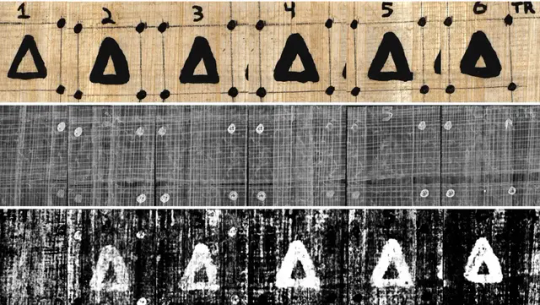

Historians already knew that Plato, the famous student of Socrates who wrote down his teacher's philosophies as well as his own, was buried at the Academy, which the Roman general Sulla destroyed in 86 B.C. But researchers weren't sure exactly where on the school's grounds that Plato, who died in Athens in 348 or 347 B.C., had been laid to rest.
However, with advances in technology, researchers were able to employ a variety of cutting-edge techniques including infrared and ultraviolet optical imaging, thermal imaging and tomography to read the ancient papyrus, which is now part of the collection at the National Library of Naples.
So far, researchers have identified 1,000 words, or roughly 30% of the text written by Philodemus.
"Among the most important news, we read that Plato was buried in the garden reserved for him (a private area intended for the Platonic school) of the Academy in Athens, near the so-called Museion or sacellum sacred to the Muses," researchers wrote in the statement. "Until now it was only known that he was buried generically in the Academy."
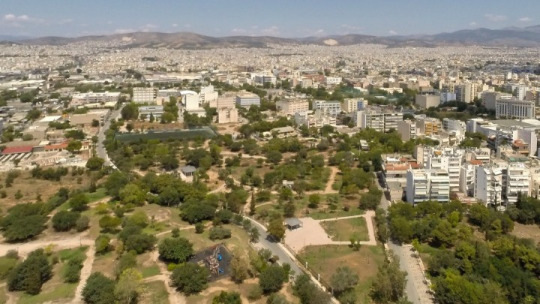

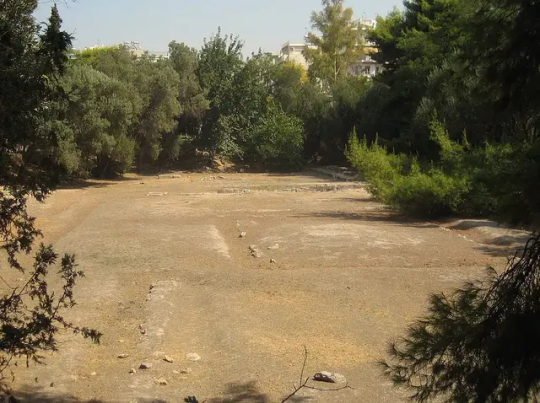
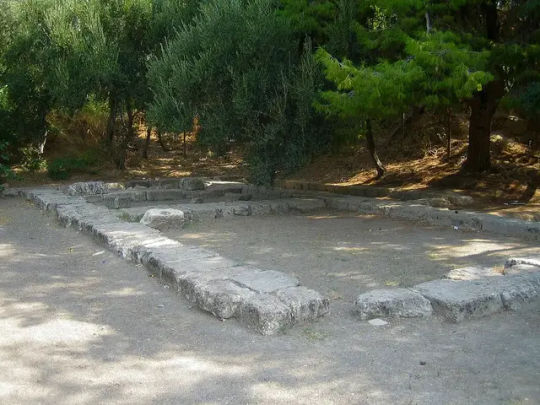
The text also detailed how Plato was "sold into slavery" sometime between 404 and 399 B.C. (It was previously thought that this occurred in 387 B.C.)
Another part of the translated text describes a dialogue between characters, in which Plato shows disdain for the musical and rhythmic abilities of a barbarian musician from Thrace, according to the statement.
This isn't the first time that researchers have used AI to read ancient scrolls that survived Mount Vesuvius's eruption. Earlier this year, researchers deciphered a different scroll that was charred during the volcanic eruption at a nearby villa that once belonged to Julius Caesar's father-in-law.
By Jennifer Nalewicki.
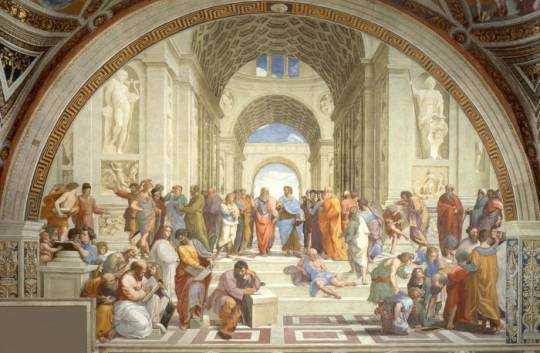
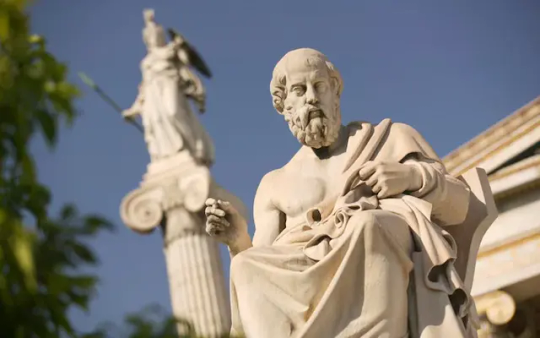
#Plato#Herculaneum Scrolls Reveal Plato's Burial Place#Herculaneum#Pompeii#Philodemus of Gadara#History of the Academy#The Academy#Plato's Academy#the Platonic Academy#the Academic School#athens greece#mount vesuvius#roman dictator sulla#ancient texts#ancient artifacts#archeology#archeolgst#history#history news#ancient history#ancient culture#ancient greece#greek history#roman history#roman empire
82 notes
·
View notes
Text


I would tell them to stop being so god damn gay for each other because it’s embarrassing but I really don’t want to do that. I don’t think anyone wants to do that.
#xena warrior princess#xena and gabrielle#xena#lucy lawless#gabrielle#renee o'connor#season 1#athens city academy of the performing bards#season 6#many happy returns#what are these looks?#who looks at their friend like this?#seriously!#wlw representation#queer representation
25 notes
·
View notes
Text

Statues of Platon and Socrates, Academy of Athens, GREECE
#platon#socrates#statues#estatuas#sculptures#esculturas#academy#academia#athens#atenas#greek#griego#greece#grecia#europe#europa
289 notes
·
View notes
Text
I will be back on the DBDA train shortly but uhhhhh just wanted to check in on the Umbrella Academy fandom…I don’t really go here anymore but are yall doing okay?
15 notes
·
View notes
Text
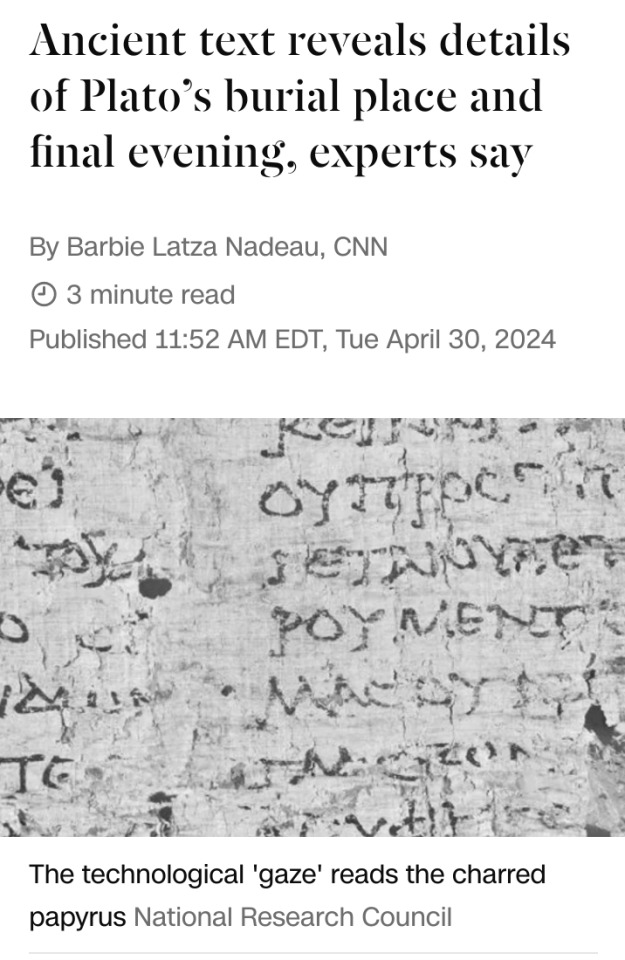
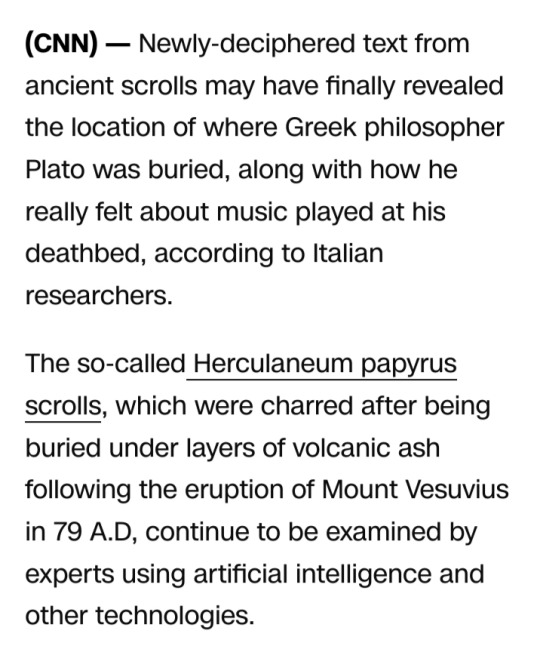
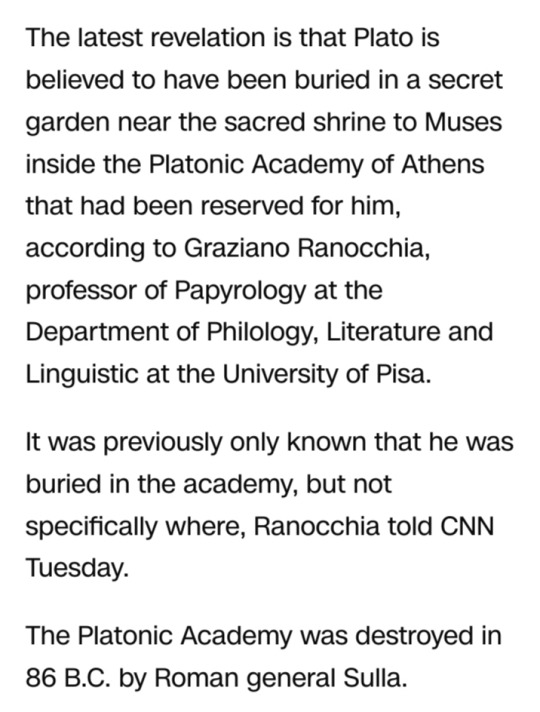

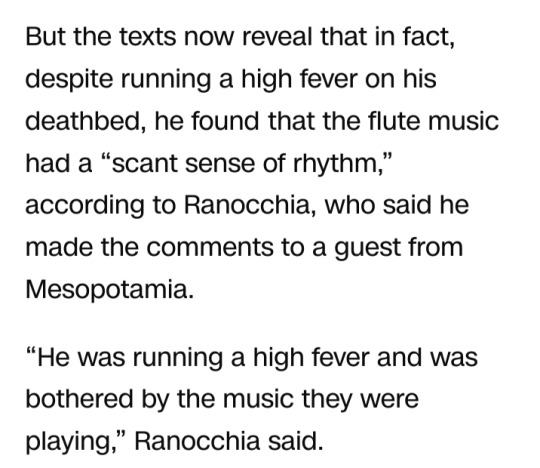
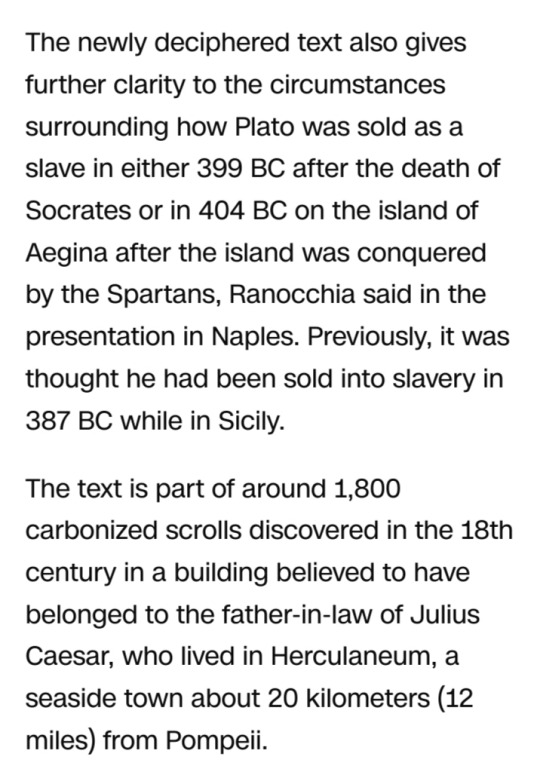


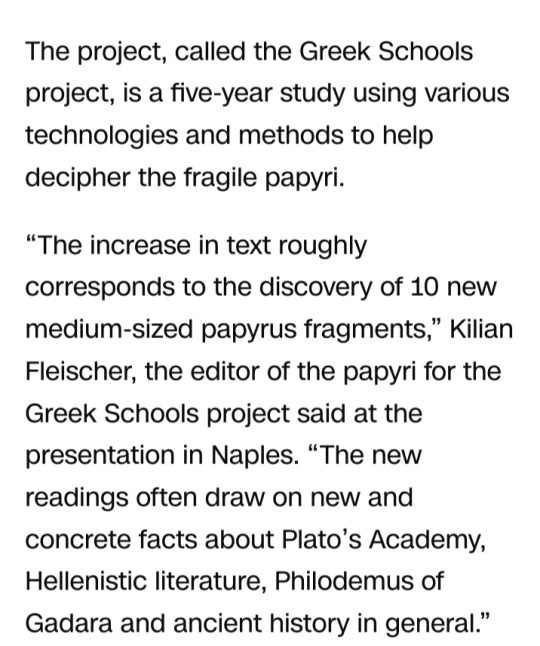
#Plato#Mount Vesuvius#Herculaneum papyrus scrolls#ancient scrolls#Muses#Platonic Academy of Athens#papyrology#Sulla#Socrates#carbonized scrolls#ancient texts#Julius Caesar#Herculaneum#artificial intelligence#optical coherence tomography#infrared hyperspectral imaging technology#imaging technique#European Union#Greek Schools Project#Hellenistic literature#Philodemus of Gadara#ancient history#ancient civilizations#burial place
7 notes
·
View notes
Text
If anyone even cares i finished a pack of my pretentious little cigarettes while pretentiously staring at the statues of plato and socrates while reading my pretentious untranslated little philosophy books and waiting for the bus . Living the life style philosophy professors DREAM of
#i have to take exams every saturday and the place where i take them is like a 45 muinite walk from my house that passed through all the#major historical places in central athens so after exams ill go on a walk home instead of taking the metro to clear my head and when i pass#the academy i take a little break lay in the grass have a smoke and compare my awnsers to the awnsers in the books . its like my favourite#thing to do . i also pass through placa and outside the musium of acropolis and some shops that sell statues#i do sometimes take the bus at the academy though because i mean there so many times someone can look at the museum and still be impressed
7 notes
·
View notes
Note
Καλημέρα! I'd like to ask you about the colours of Classical statues and temples. Have you seen any reconstructions you liked? Bless the people investigating them, it seems they didn't wanna assume too hard so they ended up making the statues look somewhat on the very gaudy side. (I sent the same ask to @alatismeni-theitsa just to be sure)
Haha this is a sore spot for me because I really do love the woren all white look!
However, we all have to acknowledge that the preference for the bare white look is largely a bias infliltrating our minds through the presumed superiority of Renaissance Art. The colour of the ancient statues had already faded by that time, making Renaissance artists believe that this was the actual classical prototype that was supposed to be imitated and glorified.
I believe our love for the all-white classical look in sculpture is based on both this bias, but also the aetherealness, distance and solemnity that was believed to be communicated through this lack of colour and the exposition of the work done on the bare luxurious marble. That second reason is what I find beautiful in it too.
Of course, actual Ancient Greek art was coloured. Given that Greek art of antiquity aimed at a naturalistic approach, it is absolutely reasonable that the artists wanted their artwork to have the colours of the real subject / object it was depicting. What you see now are recreations based on whatever colour-tracing methods we have available today, which are not infallible yet. While the general conclusions must be more or less accurate ("this part of the chiton was red and the hair was black" etc), they still remain hypothetical because the methodology cannot perfectly detect hues, paint layers, different pressures on the paint and all those techniques that provide nuance and are integral to art. Having said this, we should also remember that creating paint hues in antiquity was extremely difficult and obviously the paint job done could not be equal to that of the last centuries. Therefore, with our modern criteria, ancient paint job must have often be underwhelming but, again, I believe we also are in a position in which we do not get the precise, fully accurate picture yet.
In a way, this conviction we all have that coloured statues are kitsch is kind of arbitrary, simply because the notion that sculpture reached its peak with the Renaissance is so very deeply engraved to our minds. Think about modern art for a moment: modern paintings, figures and figurines, ceramics with paint... or even sculpture from other cultures of the world outside the Greco-Roman sphere: none of this is considered kitsch, simply because none of this is directly compared to Renaissance scupting. (Although of course other cultures' arts are often viewed derogatorily through this very pervasive presumption that the Renaissance was the peak.)
We also should return back to the considerable probability of poorly made recreations, which lack nuance. Take these examples:
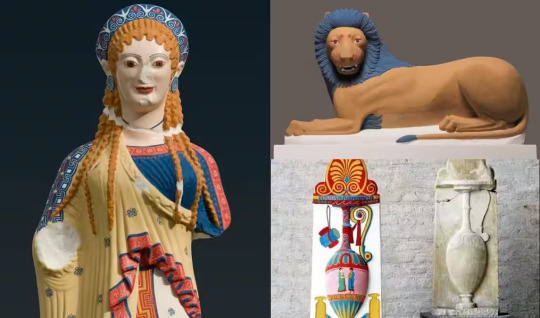
Jesus Christ Superstar
Not the best, right? However, if we see paintings and art from earlier times i.e Mycenaean and Minoan and contemporary ones like rare surviving Classical, Hellenistic and Grecoroman art, we realise that colours were used wisely and there was the concept of layering, shading and creating detail and nuance.
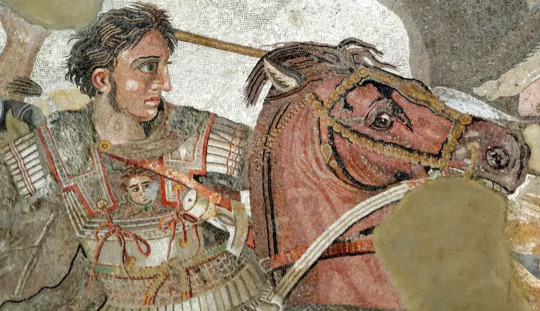
In this art of Alexander (100BC, exhibited in the Museum of Napoli) we can see an extensive use of highlighting, layering and creating shadows, which is very different from the blast of thick paint you will see on these recreations.
There are also recreations which prove exactly that a lot of the responsibility regarding how we perceive them lies on the very quality of the recreation itself.
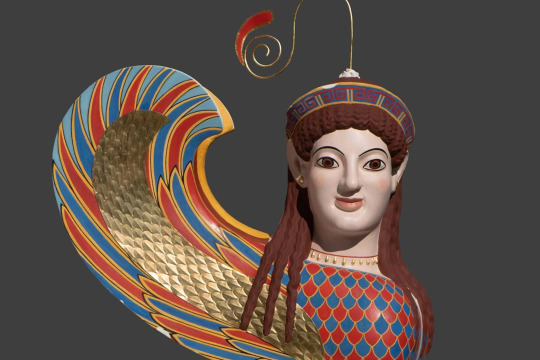
Source
Honestly, for me this is totally fine. You can find fine modern art - even modern Greek folk art - of similar styles or colouring. The quality of the recreation here is far superior than the ones above.

This one, I am also totally fine with it, especially the last of the colourised ones. It took exactly the same amount of extraneous work for the artist to sculpt plus the struggle of painting it. And it gives us so much additional information about what fashion looked like.
The recreations made for ancient Greek temples prove more how colour could actually be used in good taste:
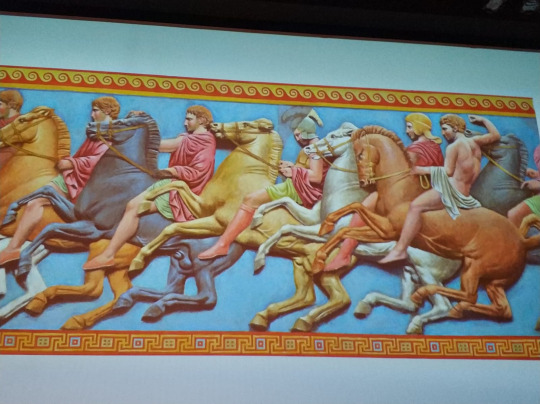
If I told you this was some late medieval manuscript art, you'd not think of it as kitsch. The idea immediately kicks in when I say it is a recreation of a Parthenon frieze colourised. (Source)

In this recreation IMO the Parthenon looks hella fine!
I confess I struggle with the Caryatids of the Erechtheion:
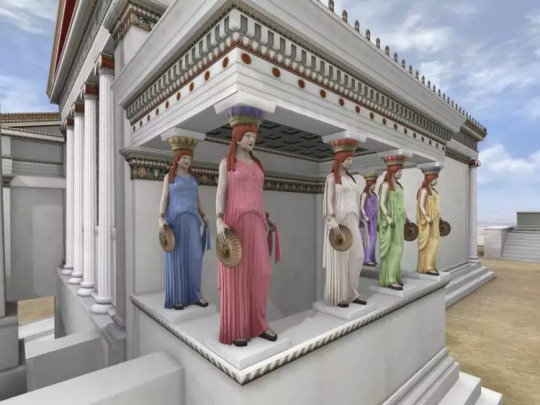
but I suppose it's partly because to us it looks like you took all the redhead Barbies you had and assigned them to carry the building. Without all the preconceptions we have, which are informed by kitsch cheap art of the last decades and the axiom that Renaissance sculpture is the best, Ancient Greeks were probably astonished by the beauty and realism of six different beauties making the temple stand. For me, who I am influenced by all that I have analyzed, my colour tolerance would go as far as having all of them like the Caryatid in the middle, with the white peplos. Apart from that, the paint in the temple is totally beautiful and elegant. (Source)
The neoclassical Academy of Athens uses paint like in antiquity except it draws the line in the statues (and perhaps it uses more gold). The Academy of Athens is exemplary.
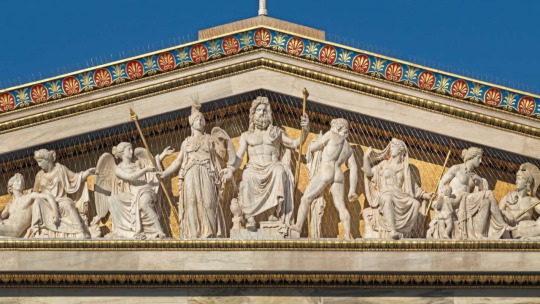
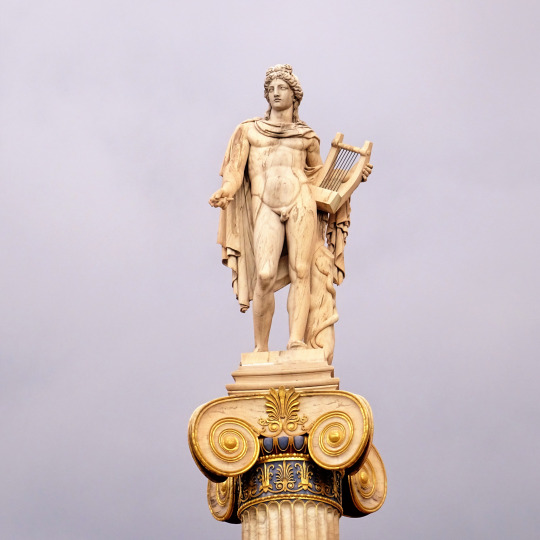
Zappeion also has colour and it's marvelous:
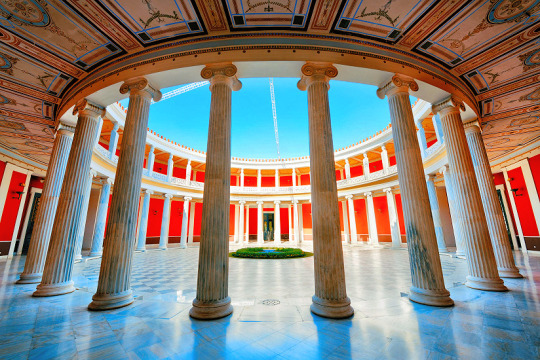
I believe this was the aesthetic ancient artists were going for.
In conclusion, I think ancient artists tried to use paint in the best of their abilities, no differently than how we also almost always add colour to our modern art, except of course there must have been limitations to the qualities and varieties of paint hues that could be produced at the time, which would inescepably sometimes lead to results less than ideal. Regardless of how well or poorly painted any particular ancient artwork was, we are predisposed to view it negatively anyway because we are wired to believe that the Renaissance style set the standards for what is beautiful and what is not and that when it comes to colour in sculpture, less is obligatorily (much) more.
That's all I got to say! From my side, καληνύχτα! (I'm posting this way past midnight lol)
#greece#europe#ancient greek art#ancient greece#ancient greek statues#ancient greek temple#art#renaissance art#greek culture#parthenon#academy of athens#zappeion#athens#attica#sterea hellas#central greece#mainland#anon#ask#tw long post#long post
29 notes
·
View notes
Text
I made myself hot chocolate from scratch today. It was really nice; reminded me a bit of my trips with my godfather.
#when I was little#around 8 to 11 I think; tho it might have been a year in each direction#my god father; who's a headmaster in a prestigious opera song academy in Leon; would take me on trips#I was wit him in greace; Athens rodos and some other islands I forgot about#and I once traveled to the carabean#we'd always stay at either a cheap motel he rented day of; or at one of his girl friend's houses; they were always very sweet#he was a closested gay#it was a kind of open secret; I think the person it bothered most was him#but I remember each morning I would get a big bowl sized glass#cup?#one of those bowl cups#it was yellow#thinking about it now; my grandfather has an almost identical one; just not as glossy#of hot choco#made in a pot#from local chocolate bars#little tubes of compacted coco powder; with some; but little coco butter#about the length of your index finger; maybe bigger; and as thick as a thumb is wide#she'd grind it with a little zester type grinder; the small flat ones with a handle#sometimes I'd help#it was really nice#I got really nostalgic making myself choco#with dark chcolate bars and coco powder and sugar#and just a little bit of butter and cream#to be honest; the coco I drank then was objectively disappointing#the chocolate never incorporated cleanly and it was good; but nothing amazing#but the feeling of it#the context and the fact it was made by a caring host#it really made it great#and today I could show that same kind of love to myself again
3 notes
·
View notes
Text
Rewatching season 1 of xena for the first time in probably 15 years and who tf was gonna tell me that Sam Raimi snuck clips from Kubrick's (fuckin terrible) Spartacus movie into episode 13?
Like, I know Raimi loves the history (who doesn't love the third servile war of Rome? They came closest of anyone to bringing the empire to its fucking knees) he made a whole Spartacus tv show on Starz.
But im gonna need a little warning before somebody starts playing a bad movie in the middle of a good show.
#im the biggest Kubrick anti and im not sorry#xena warrior princess#spartacus#bard school#athens city academy of the performing bards#3rd servile war of rome#i took a kubrick class in college and have seen every single one of his films#my hatred is informed and well-earned
3 notes
·
View notes